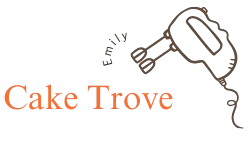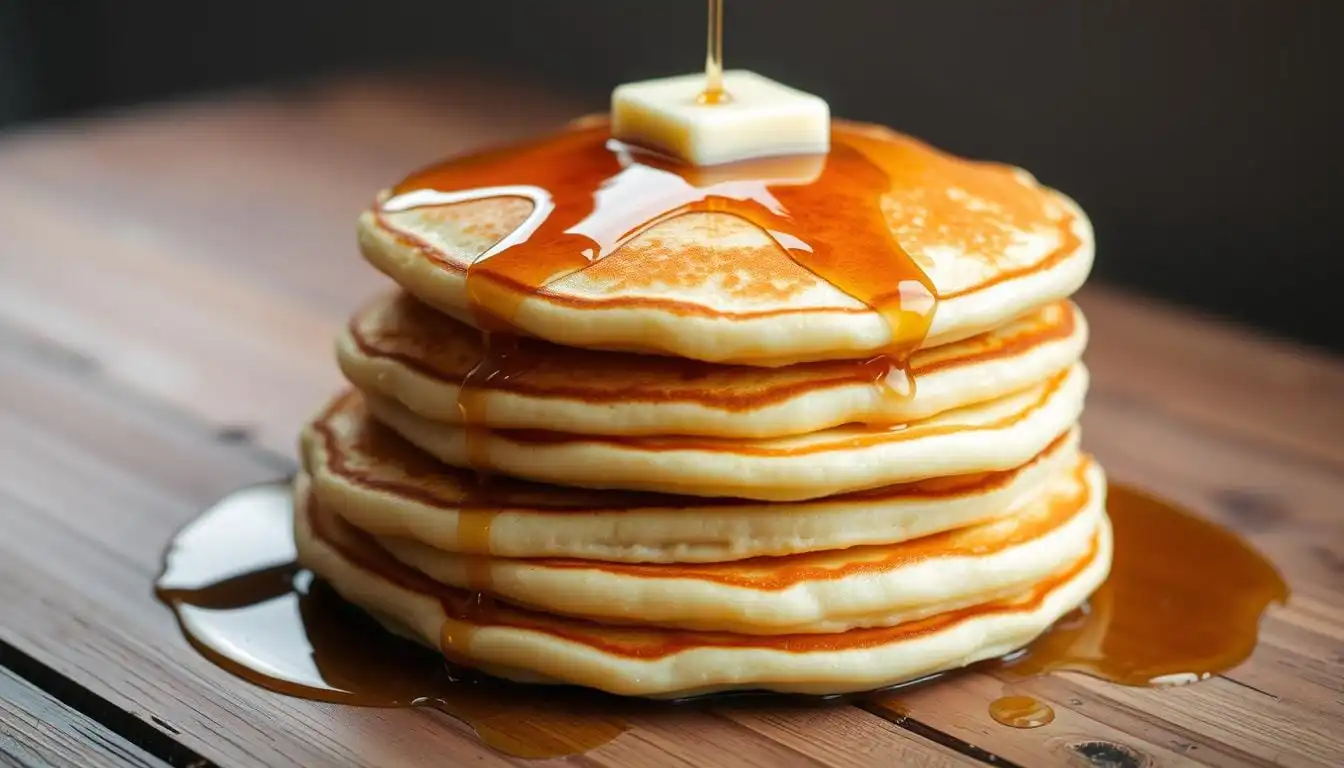How to Make Pancake Brown to perfection (No Burnt Edges!)
Every weekend morning, I remember my grandmother’s kitchen. It was filled with the warm, inviting aroma of pancakes. Her secret was making pancakes golden-brown without burning the edges.
Learning how to make pancake brown is more than just technique. It’s about creating memories. Whether you’re new to cooking or have years of experience, mastering pancake browning can elevate your breakfast. It’s about understanding a few key principles that go beyond simple cooking.
In this guide, we’ll explore the art of making pancakes with a beautiful, even golden-brown surface. You’ll learn professional techniques to make your pancakes crispy, delicious, and perfect every time.
Pancake browning is both a science and an art. We’ll cover everything from choosing the right pan to managing heat. We’ll look at every detail that makes your pancakes irresistibly golden-brown.
Table of Contents
Essential Ingredients for Perfect Golden-Brown Pancakes
To make pancakes golden brown, you need to know the key ingredients. Your recipe for golden pancakes depends on the right mix and preparation.
For a delicious breakfast, you’ll need a special mix of ingredients. They work together to make your pancakes perfect.
Basic Pancake Ingredients
Every pancake starts with a mix of essential ingredients:
- 1½ cups all-purpose flour
- 2 tablespoons cane sugar
- 1 tablespoon baking powder
- ½ teaspoon sea salt
- 1¼ cups milk
- 1 large egg
- 3 tablespoons unsalted butter
Role of Fats in Browning
Fats are key for that golden-brown color. Butter and milk have solids that caramelize, making your pancakes rich and tasty.
| Ingredient | Browning Impact | Quantity |
|---|---|---|
| Butter | Enhances color and flavor | 3 tablespoons |
| Milk | Contributes to golden surface | 1¼ cups |
Importance of Room Temperature Components
Temperature is important for pancakes. Room temperature ingredients blend better. This makes your batter even and golden.
“The secret to perfect pancakes is in the ingredients and their preparation.” – Culinary Expert
Pro tip: Let eggs and milk sit out for about 30 minutes. This helps your batter mix better and brown more evenly.
How to Make Pancake Brown: The Complete Guide
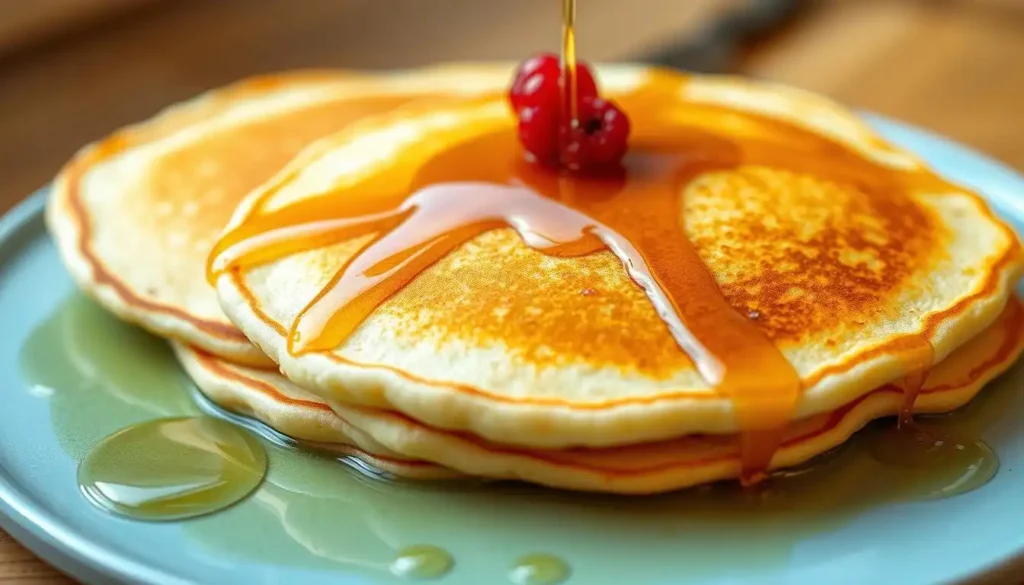
Getting pancakes to brown perfectly is more than just mixing ingredients. It’s about understanding your batter and how to cook it.
Your pancake batter is key to golden-brown pancakes. Begin by mixing your dry ingredients well. A basic recipe includes:
- 2½ cups all-purpose flour
- 2 tablespoons baking powder
- 2 tablespoons sugar
- 1 teaspoon kosher salt
The secret to a beautiful brown color is resting your batter for 5-10 minutes. This step lets flour soak up liquid, making the batter smoother and cook more evenly.
“A rested batter is a secret weapon for perfect pancakes.” – Breakfast Cooking Expert
When making your batter, aim for a uniform texture. Too much mixing can make pancakes tough, while too little can cause uneven browning. Use about ¼ cup of batter per pancake for the right size and color.
| Ingredient | Quantity | Impact on Browning |
|---|---|---|
| Milk | 2 cups | Helps create golden surface |
| Eggs | 2 | Contributes to faster browning |
| Melted Butter | 2 tablespoons | Enhances color and flavor |
Pro tip: Always test a pancake to check your griddle’s heat. The right temperature will give you an even, golden-brown color without burning the edges.
Mastering the Perfect Cooking Temperature
To get beautifully browned pancakes, you need to be precise with the cooking temperature. Knowing the right techniques is key to getting that golden surface without burning your pancakes.
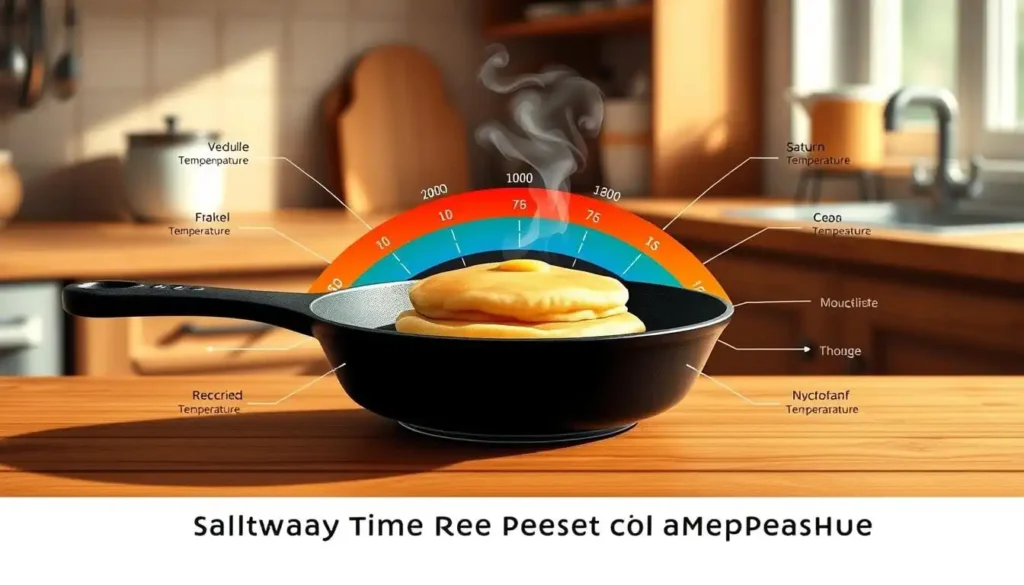
The secret to a great pancake color is understanding your cooking surface and managing the heat. Professional chefs say to keep the heat at a medium level, between 350-375°F (175-190°C).
Ideal Pan and Griddle Settings
The right cooking surface is important for browning pancakes. Here are some options:
- Cast iron skillet for even heat distribution
- Non-stick griddle for consistent temperature
- Electric griddle with precise temperature control
Signs Your Pan is Ready
To check if your pan is at the right temperature, try this simple test:
- Sprinkle a few water drops on the pan surface
- Watch how the droplets behave
- Ideal temperature: droplets should sizzle and dance
Managing Heat Throughout Cooking
Keeping the heat consistent is key for even browning. Start with medium heat and adjust as needed. If pancakes brown too fast, lower the heat a bit. This ensures they are fully cooked without burnt edges.
“Temperature control is the heart of perfect pancake preparation.” – Professional Chef
Pro tip: Cooking in batches helps manage heat better and gets more consistent results. Try to cook 4-6 pancakes at a time, using about 1/4 cup of batter for each.
Common Mistakes That Lead to Uneven Browning
Making perfectly browned pancakes can be hard. Many people struggle with uneven color and texture. Knowing the right tips can help you make golden-brown pancakes every time.
- Cold Batter Disaster: Cold batter doesn’t brown well. Let your batter sit at room temperature for 15-20 minutes before cooking. This helps heat spread evenly.
- Impatient Flipping: Flipping pancakes too early or too late messes up the browning. Wait until small bubbles form on the surface and edges start to look dry.
- Fat Management: The wrong amount of fat can ruin your pancakes. Too little fat makes them stick, while too much butter causes uneven browning.
The condition of your pan is key for browning pancakes. A well-seasoned cast-iron skillet or non-stick pan helps achieve even color. Dirty or damaged pans can burn some areas and leave others pale.
“The secret to perfect pancakes is patience and precision in temperature control.” – Professional Chef
Getting the temperature right is what separates amateur cooks from pros. Keep the heat at medium, around 375°F, for the best browning. Lower temperatures make pancakes pale and soggy, while high heat burns the outside before cooking the inside.
| Mistake | Consequence | Solution |
|---|---|---|
| Cold Batter | Uneven Cooking | Rest at Room Temperature |
| Incorrect Pan Temperature | Burnt/Pale Pancakes | Medium Heat (375°F) |
| Improper Fat Usage | Stick/Burn Spots | Moderate Butter/Oil |
Getting good at pancake browning takes practice and paying attention to details. By avoiding these common mistakes, you’ll make pancakes that look perfect and taste amazing. They’ll impress everyone at your breakfast table.
Conclusion
Learning to make pancake brown is an art. It involves the right ingredients, temperature, and cooking skills. Your journey to perfect pancakes starts with balancing heat, butter, and batter.
Each pancake you make brings you closer to mastering the golden-brown surface. This makes breakfast truly memorable.
Practice is key to creating beautiful, evenly browned pancakes. Your first attempts might not be perfect. But, with the techniques you’ve learned, you’ll improve quickly.
Pay attention to your pan’s temperature and use the right amount of butter. Watch your pancakes carefully to prevent burning. This ensures a rich, appetizing color.
Every great cook knows cooking is about experimentation and passion. Your pancake-making skills will grow with each batch. The secret to making pancake brown is observing, adjusting, and being patient.
Whether cooking for family or a special breakfast, these tips will help. You’ll create pancakes that are delicious and visually stunning.
Start your pancake adventure today. With practice, you’ll make breakfast better. Impress everyone at the table with professionally browned, mouthwatering pancakes.
FAQ
Why are my pancakes not browning evenly?
How long should I cook each side of a pancake?
What type of pan is best for making golden-brown pancakes?
Can I prevent my pancakes from burning on the edges?
Does the type of milk affect pancake browning?
How important is letting pancake batter rest?
What’s the best way to tell if my pan is at the right temperature?
Can I add sugar to help with browning?
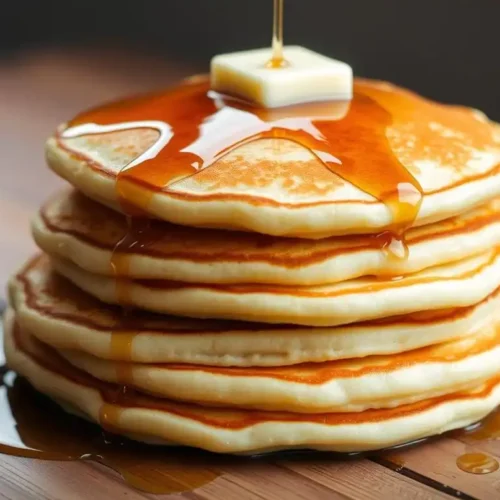
How to Make Pancake Brown (No Burnt Edges!)
Equipment
- Mixing bowls
- Whisk
- Cast iron skillet or non-stick griddle
- Measuring cups and spoons
- Ladle or ¼ cup measuring cup for portioning pancake batter
- Spatula
Ingredients
- 2½ cups all-purpose flour
- 2 tablespoons baking powder
- 2 tablespoons sugar
- 1 teaspoon kosher salt
- 2 cups milk whole milk recommended for better browning
- 2 large eggs
- 2 tablespoons melted butter plus more for cooking
- 1 tablespoon vanilla extract optional
Instructions
- Prepare Dry Ingredients: In a large mixing bowl, whisk together the flour, baking powder, sugar, and salt.
- Mix Wet Ingredients: In a separate bowl, whisk together the milk, eggs, melted butter, and vanilla extract (if using).
- Combine Ingredients: Pour the wet ingredients into the dry ingredients. Stir gently with a whisk until just combined. Be careful not to overmix; a few lumps are fine. Let the batter rest for 5-10 minutes.
- Preheat the Pan: Heat your cast iron skillet or non-stick griddle over medium heat. Use the water droplet test to check if the pan is ready: Drop a few water droplets on the surface. If they sizzle and dance, the pan is hot enough.
- Cook the Pancakes: Lightly grease the skillet with butter. Pour ¼ cup of pancake batter onto the pan for each pancake. Cook for 2-3 minutes on the first side, or until small bubbles form and the edges start to look dry.
- Flip and Finish Cooking: Flip the pancakes and cook for another 1-2 minutes, or until golden-brown and cooked through. Adjust the heat as needed to avoid burning.
- Serve: Stack the pancakes on a plate and serve with syrup, fruit, or your favorite toppings.
Notes
Tips:
- Make sure your ingredients are at room temperature for the best batter consistency.
- Rest the batter for a few minutes for more even cooking and a lighter texture.
- Keep the heat at medium to avoid burning while ensuring the pancakes cook through.
Did You Try Our Recipe?
There are no reviews yet. Be the first one to write one.
